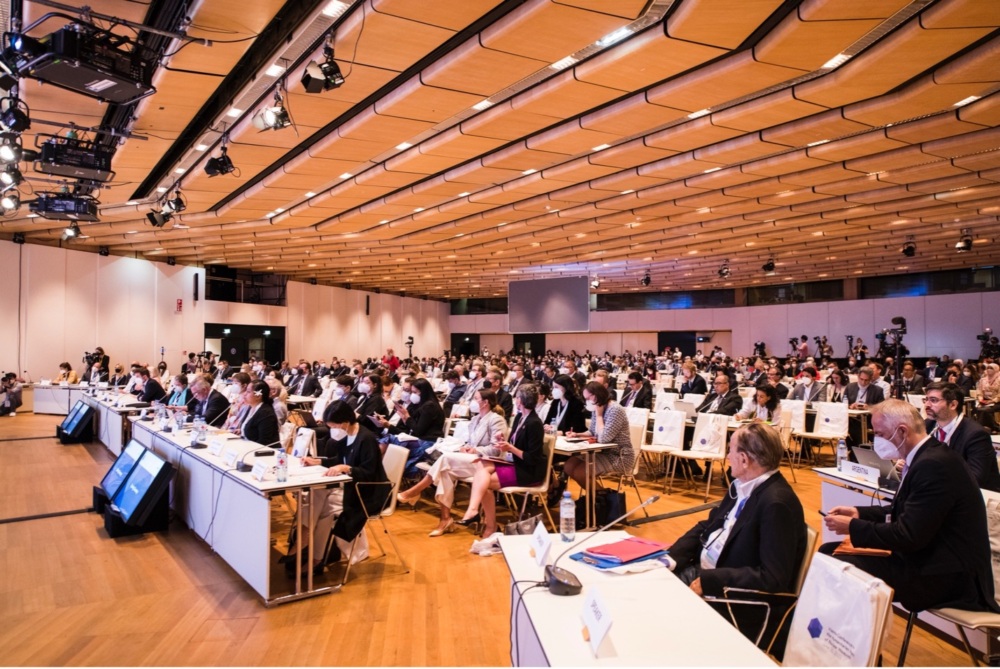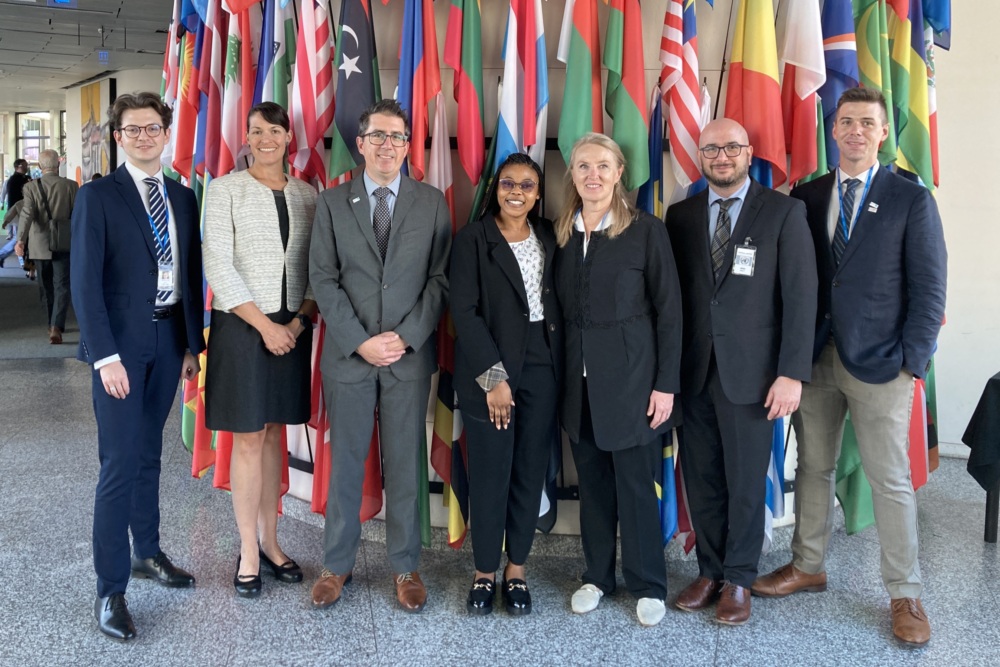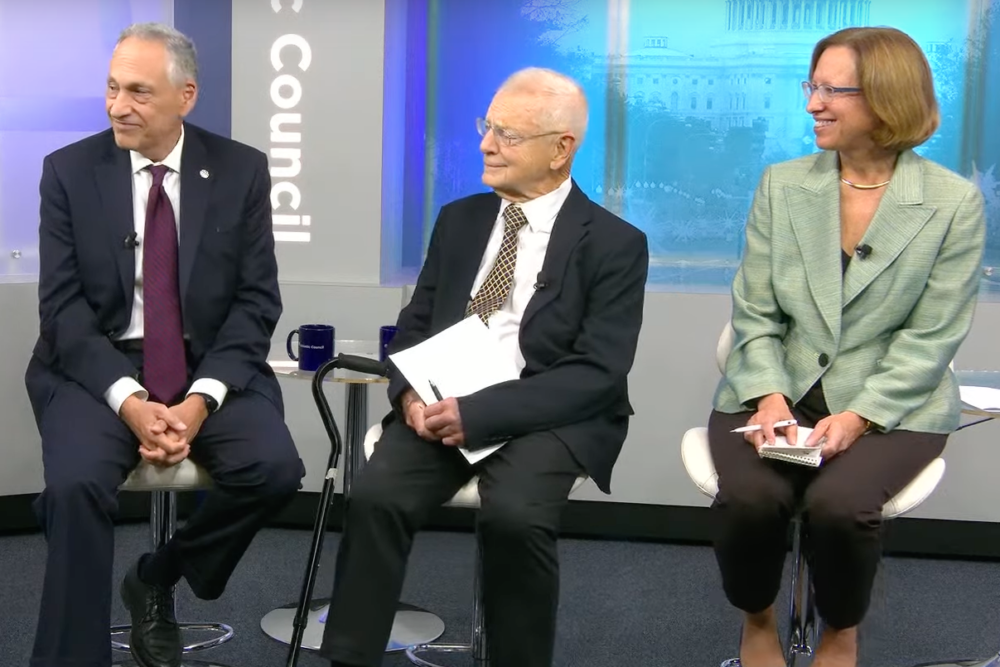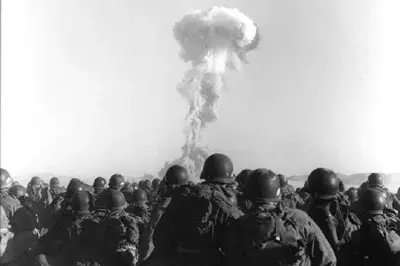
Ananya Agustin Malhotra
Consultant, Global Nuclear Policy Program
Atomic Pulse
About the image
Ananya Agustin Malhotra, a consultant with the Global Nuclear Policy Program, attended the First Meeting of States Parties of the Treaty on the Prohibition of Nuclear Weapons as part of a group of scholars from Princeton University’s Program on Science and Global Security. In this piece, she reflects on her experience and provides an overview of the notable outcomes of this historic meeting.
Nearly a year-and-a-half after the Treaty on the Prohibition of Nuclear Weapons (TPNW) entered into force banning the development, possession, testing, use, and threat of use of nuclear weapons under international law, states parties to the treaty met for the first time to reiterate their commitment to a future where “nuclear weapons have been totally eliminated from the Earth”; to pointedly condemn those who continue to issue nuclear threats; and to take actionable steps towards implementing the treaty’s bans on nuclear weapons-related activities and positive obligations related to victim assistance and environmental remediation.
The First Meeting of States Parties to the TPNW took place in June in Vienna, Austria. Officials from 83 countries, including 49 member-states and 34 observer-states, and hundreds of representatives from academia, civil society, and communities harmed by the use and the testing of nuclear weapons gathered to develop actionable steps to build a safer world and plans to encourage states that have not yet signed onto the treaty to do so.
Having entered into force in 2021 after a decade-long campaign led by non-nuclear weapon states, the International Campaign to Abolish Nuclear Weapons (ICAN), and other civil society groups to highlight the humanitarian consequences of nuclear use and testing, the TPNW is premised on the understanding that nuclear weapons, like other weapons of mass destruction, are incompatible with international humanitarian law. The TPNW challenges the framework of nuclear deterrence that has long justified the existence of nuclear weapons as essential for national security. Its humanitarian approach reframes nuclear weapons as a threat to human security by focusing on their detrimental effects on people and the planet. To date, none of the nine nuclear weapons-possessing states have signed or ratified the TPNW.
I was fortunate to witness the historic first convening of states parties as part of a group from Princeton University’s Program on Science and Global Security. I was struck by the strong spirit of collaboration between states, parliamentarians, survivors, and civil society members at the meeting as they worked together to develop actionable steps towards a safer and more peaceful future. In contrast to many government-centered international gatherings, the voices of survivors and communities impacted by nuclear weapons were a significant presence at the meeting, including through testimony from hibakusha (survivors) from Hiroshima and Nagasaki and other affected communities serving as powerful reminders of the painful legacies of nuclear testing, proliferation, and use since 1945.
The meeting delivered a powerful statement by many countries and civil society groups who believe that nuclear weapons are unacceptable and immoral. The states parties issued two noteworthy documents: the “‘Vienna Declaration” and the “Vienna Action Plan.” In the Vienna Declaration, the state parties reiterated their commitment to a future without nuclear weapons and, notably, delivered strong condemnations of nuclear threats. “We are alarmed and dismayed by threats to use nuclear weapons and increasingly strident nuclear rhetoric,” they wrote. “We stress that any use or threat of use of nuclear weapons is a violation of international law, including the Charter of the United Nations. We condemn unequivocally any and all nuclear threats, whether they be explicit or implicit and irrespective of the circumstances.”
As a universal indictment, the statement constitutes the most significant multilateral indictment so far of Vladimir Putin’s nuclear saber-rattling throughout the Russian invasion of Ukraine. TPNW states also were explicit in condemning the lack of progress on disarmament by nuclear weapons states: “None of the nuclear armed states and their allies under the nuclear umbrella are taking any serious steps to reduce their reliance on nuclear weapons. Instead, all nuclear-armed states are spending vast sums to maintain, modernize, upgrade or expand their nuclear arsenals and are placing a greater emphasis on and increasing the role of nuclear weapons in security doctrines.”
At the same time, member-states resolved to “engage with those States that for the moment remain committed to nuclear weapons and deterrence” through “opportunities for dialogue [and] highlighting the underlying rationale of the Treaty and the humanitarian consequences of nuclear weapons.”
In the Vienna Action Plan, states parties presented a wide-ranging and detailed 50-point plan for implementing the TPNW. The plan sets out “concrete steps and actions” and “elaborates on roles and responsibilities” to guide the implementation of the Treaty, including through victim assistance and environmental remediation. Steps include establishing national contact points and working groups on key aspects of the treaty, creating a scientific advisory group to advise states parties, and growing an “international trust fund for states that have been affected by the use or testing of nuclear weapons.”
In national statements and in the Action Plan, TPNW member-states reaffirmed the TNPW’s compatibility with existing arms control agreements, especially the 1970 Nuclear Non-Proliferation Treaty (NPT). Almost all TPNW signatories noted that they are members in good standing of the NPT and see the two treaties as complementary. Member-states also affirmed that the TPNW responds to and contributes to meeting their national NPT obligation under Article VI for “each of the states parties” to “pursue negotiations in good faith on effective measures relating to cessation of the nuclear arms race at an early date and to nuclear disarmament.”
Several states noted that the Ban Treaty can be traced back to the agenda set in 1946 by the UN General Assembly’s first-ever resolution, which identified global nuclear disarmament as a goal. The TPNW also builds on treaties establishing nuclear-weapons-free-zones in Latin America and the Caribbean (1967), the South Pacific (1985), Southeast Asia (1995), Africa (1996), and Central Asia (2006). The Action Plan also reiterated the importance of complementarity and cooperation with other key international disarmament and non-proliferation institutions, notably the International Atomic Energy Agency (IAEA) and the Comprehensive Test Ban Treaty Organisation (CTBTO), especially in the areas of nuclear safeguards and verification.
States parties concluded in the “Vienna Declaration” that while they have “no illusions about the challenges and obstacles that lie before us,” they are determined to “not rest until the last state has joined the treaty, the last warhead has been dismantled and destroyed, and nuclear weapons have been eliminated from this Earth.” Now, intersessional work begins on individual aspects of the treaty in advance of the Second Meeting of States Parties, chaired by Mexico, at the UN Headquarters in New York in late 2023. While the path to a world without nuclear weapons presents significant challenges, the First Meeting of States Parties of the TPNW delivered a powerful message of hope to fuel progress during a historical moment when disarmament is needed most.
Sign up for our newsletter to get the latest on nuclear and biological threats.
Lynn Rusten, vice president of NTI’s Global Nuclear Policy Program, shares her reaction to the 2023 Strategic Posture Report during a panel event at the Atlantic Council.
There is no noise at first, only a flash so bright that the soldiers see their own bones and blood vessels through their skin, as if they have x-ray vision.



